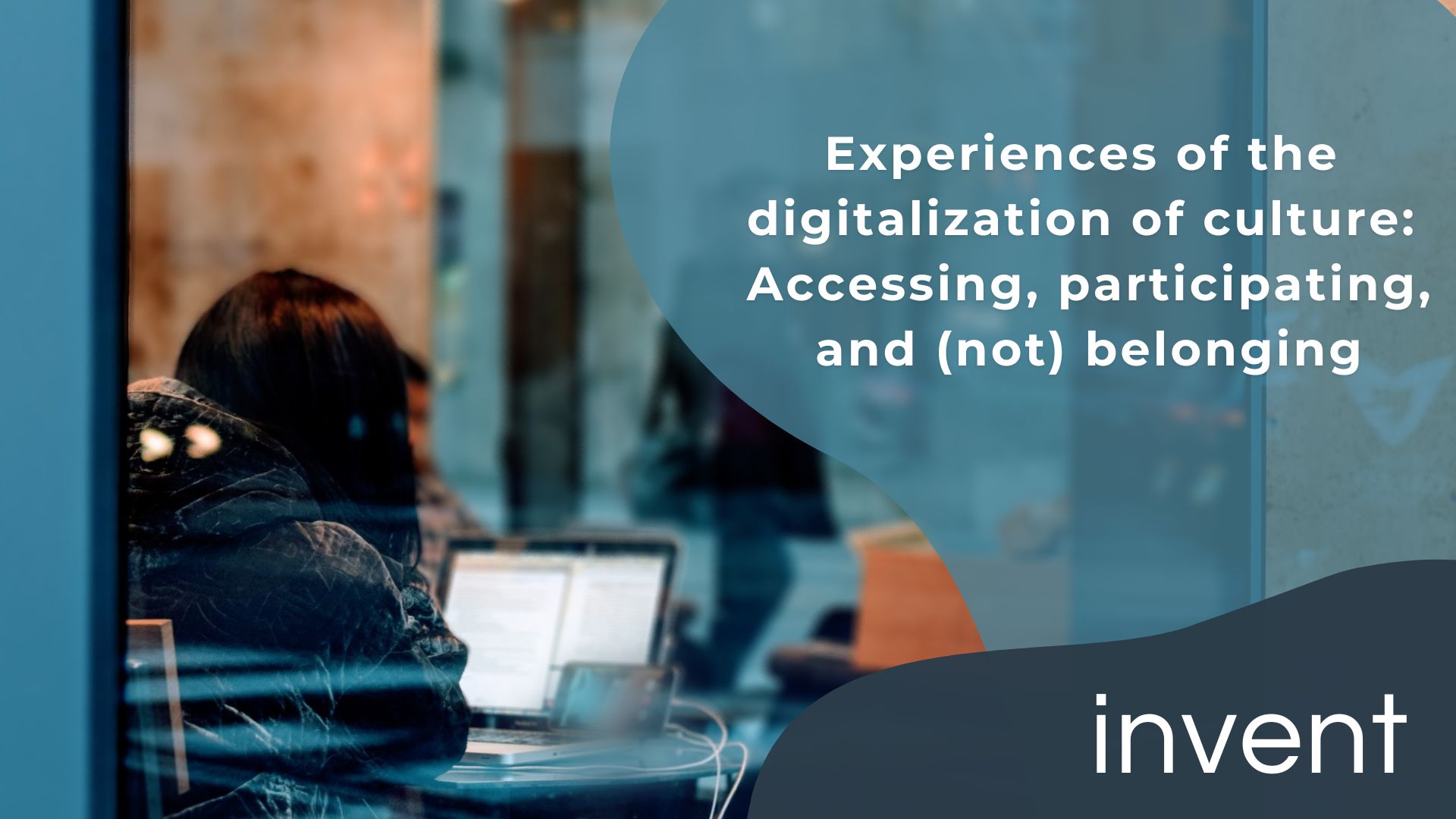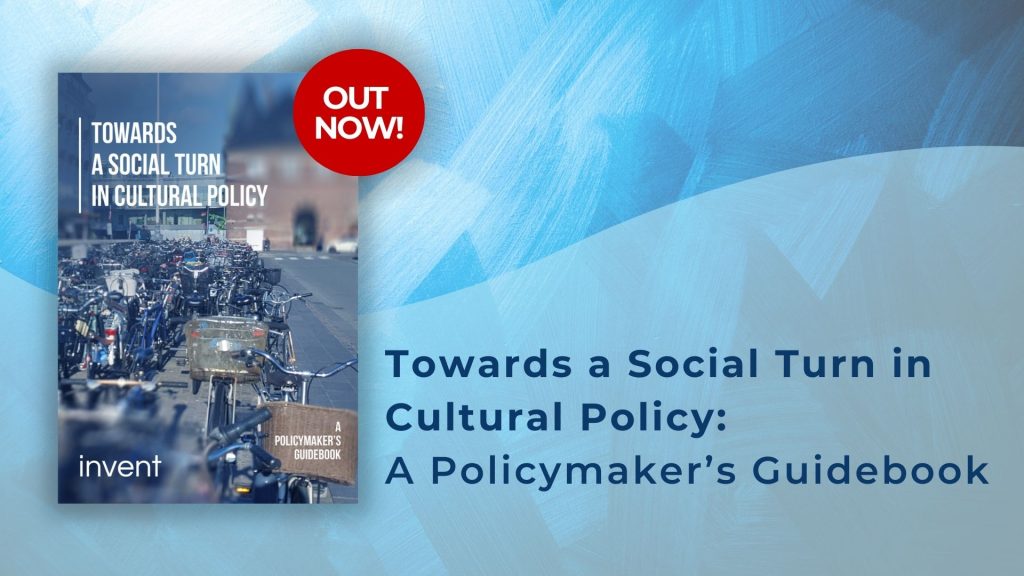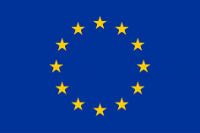Our last blog post presented an introduction to INVENT’s current interview data collection phase. In this post, we want to highlight a subset of questions, which explore how people relate to digital media in their lives, and how those impact their cultural practices.
Roughly 180 interviews are conducted during 2022, to gain new insights into the ways in which people from diverse backgrounds (citizens with and without migrant backgrounds in the respective countries) see and verbalize their (changing) experiences and meanings related to culture.
Due to varying progress, we present preliminary highlights from the interviews, emphasizing data from the 20 Danish interviews with additional interview quotes from Finland, France, Serbia, and the UK to illustrate central findings beyond the Danish context.
Digitalization provides access to culture
Most people mention access to information about cultural activities, recommendations, library, etc. as a main affordance. Culture is something that is accessed online or informed by online content. Another positive (side)effect of digital media is the broadening of cultural consumption, as people discover things that they would usually not encounter.
“It’s definitely a big influence. There is so much information you have at hand, especially with a phone, you can just look something up any time. There is so much more that you can discover that you might not have known about. In that sense it is enriching to be able to find what kind of cultural events are happening around you.”
(Female, 32 years, born in Germany, living in Denmark)
Covid-19 increased the digital
When asked about general effects of the Covid-19 pandemic, most people mentioned increased digital and online activities. A common experience from this period, characterized by social distancing and lockdown measures, was an increase in a variety of digital cultural offers and recommendations such as digital library services, audio books and podcasts, and streaming platforms. Many mentioned cultural activities such as live streams of theatre plays or concerts as something they tried out during the pandemic. However, they all emphasized not enjoying such activities as much, clearly differentiating between a digital and a physical experience.
Some interviews exemplify situations of simultaneous, intertwined forms of media use, emphasizing the different affordances and mundane consumption practices of digital media. Consuming cultural products and participating in cultural activities in a digital age implies many modes of mobility
“I remember very clearly when we were driving through [region], and then the phone rang. And we had just taken out our picnic coffees and were sitting on a field, when a relative says that she’s sending us a message. And we got a piano performance video, her son was playing the piano, in the middle of the field. So I thought it was a really great [technological] development [laughing]. It was really magnificent.”
(Female, around 60 years, born in Finland)
“Some of it, for example with Instagram it’s like, you’ll have something on TV and if it’s something that I’m half interested in, I’m watching TV, I might be scrolling a bit just to keeping up to see what’s going on outside in the world as well. So, it’s kind of always there”
(Female, 38 years, born in UK)
Digital ways of expressing, creating, and (not) belonging
Being able to reach a community of like-minded through online forms of expression, mostly on social media, is also highlighted as a positive aspect to digital media technology. However, several interviewees felt it important to add that they are not “that kind of person”, by which they mean active social media users that participate in online discussions.
“We also had an Instagram page for this gymnastics team, so we did a little bit of promotion of what we do […] and then I was really proud of this choreography that I’ve done. I wanted to show it to people I know in my network who are from or connected to the gymnastics world. And then I was contacted by former gymnastics coaches and my mother’s old gymnastics friends and some I’ve gone to gymnastics with myself. Who have commented that it was cool I did this, it was a good choreography. And it makes you quite happy.”
(Female, 21 years, born in Denmark)
Digital media play an ever-growing role in everyday life
“It is after all a lifeline. It’s the one that runs your life. So it’ s online banking/mobile banking, Facebook, texting, etc. I once tried to be without it for a day. I felt like hell.. where the heck is my phone?”
(Male, 64 years, born in Denmark)
Interviewees point to digital media technologies being very important in their daily lives, for both good and bad. The interviews reveal a multitude of affordances and the pervasiveness of media technology in almost all parts of life. When talking about keeping in touch with friends, family, and communities, etc., social affordances are more important than the technology. For migrants, being able to stay in contact with relatives, friends, and cultural products in the home country is clearly important and afforded by digital media technology
“The phone is mainly to communicate through WhatsApp or Facebook a little bit. It’s mostly to communicate with the family in Tahiti”
(Female, around 60 years, living in France)
“Yes, of course! Sure, sure, yeah, yeah! Daily. Okay, I thought that went without saying (smiles) […]”
(Male, around 30 years, born in Serbia, living in Austria)
The digital appears as an environment to either be immersed in or as an external power that poses risks, possibilities, and a need for “keeping up”. Age or generational differences might play a role, especially in terms of having online-only friends or communities. Differences occur when interviewees describe the digital environment as “something to catch up with” or having to make an active effort to stay part of, as an uncontrollable force
“And since I didn’t need a computer in my working career, I’ve had to do a hell of a “digital leap” in the last three years, and I still almost can’t cope with it. […] But yeah, I think this [digitalization] is very unequal.”
(Female, around 60 years, born in Finland)
This preliminary analysis of spotlights from a section of interviews points to relevant observations about how digitalization is shaping European’s cultural practices, which will be explored more in-depth in the following and final phase of the INVENT project.



 This project has received funding from the European Union’s Horizon 2020 research and innovation programme under grant agreement No
This project has received funding from the European Union’s Horizon 2020 research and innovation programme under grant agreement No
Leave A Comment